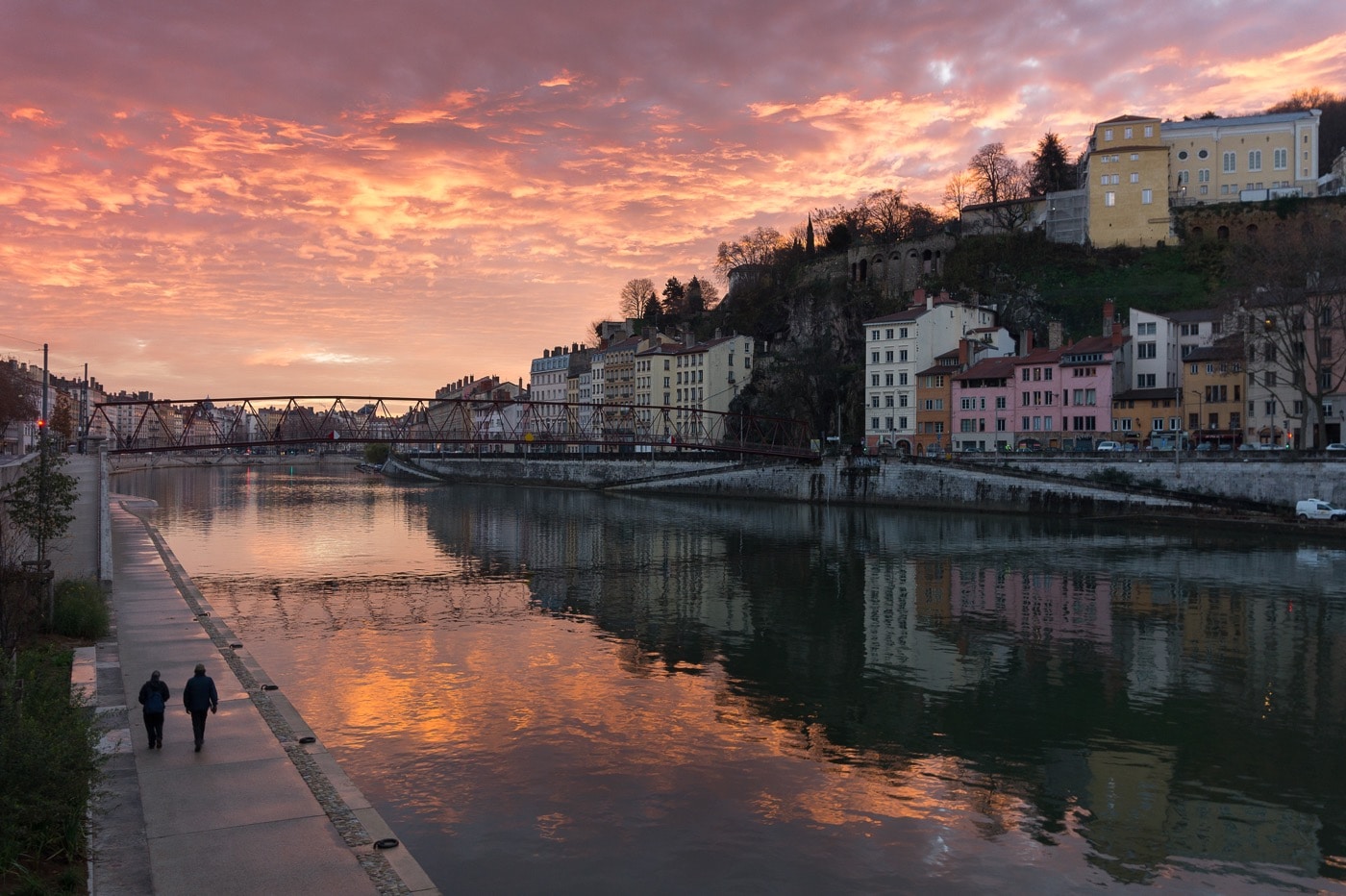Centuries of history, celebrated French cuisine, a towering cathedral on the river … Paris? No, I’m talking about Lyon, a city steeped in history and the home of Paul Bocuse, a culinary legend who changed French cooking forever.
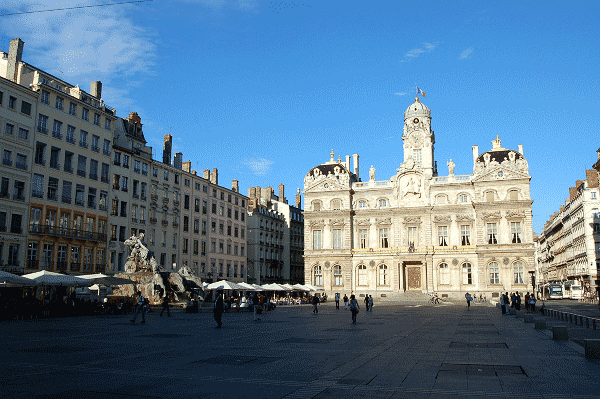 Compact and eminently walkable – you’ll need to burn off the calories from the famously rich cooking – Lyon is by turns quiet and bustling, a modern metropolis firmly rooted in traditions and ancient history. Start your visit where the city began, atop Fourvière Hill. Make the moderately strenuous climb through a leafy park from Vieux Lyon (Old Lyon) or take the funicular near the Metro station. Behind the Notre Dame Basilica, orient yourself to the city unfolding at your footsteps. Directly below is Vieux Lyon, then the heart of the modern city occupying the Presqu’île, a peninsula between the Saône and the Rhône Rivers. After, in the distance where the rivers meet, is a spectacular new neighborhood known as La Confluence.
Compact and eminently walkable – you’ll need to burn off the calories from the famously rich cooking – Lyon is by turns quiet and bustling, a modern metropolis firmly rooted in traditions and ancient history. Start your visit where the city began, atop Fourvière Hill. Make the moderately strenuous climb through a leafy park from Vieux Lyon (Old Lyon) or take the funicular near the Metro station. Behind the Notre Dame Basilica, orient yourself to the city unfolding at your footsteps. Directly below is Vieux Lyon, then the heart of the modern city occupying the Presqu’île, a peninsula between the Saône and the Rhône Rivers. After, in the distance where the rivers meet, is a spectacular new neighborhood known as La Confluence.
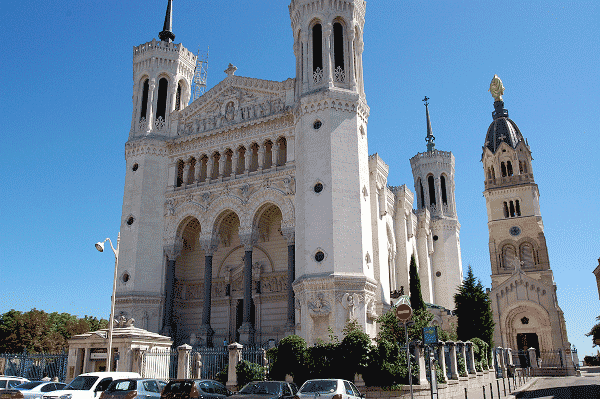
Built in the late 19th Century, the Notre Dame Basilica proves a stunning sight atop the hill to acclimate, its distinctive four towers visible from many vantage points. A popular pilgrimage site, the cathedral abounds in statuary and depictions of Biblical scenes, most significantly of the Virgin Mary, and its ornate archways and ceilings are covered in gold leaf. For devotees of religious art, the cathedral also houses a Museum of Sacred Art holding its treasury and is used for occasional special exhibitions.
Fourvière Hill is the birthplace of modern Lyon with the founding of a Roman settlement known as Lugdunum in 43 BC. Later, it became the capital of the Gaul territories and remnants of this ancient civilization are in abundance. A well-preserved amphitheater from 15 BC is still used for performances during the Nuits de Fourvière Festival. The site, free to visit, includes two open-air theaters overlooking the city and the ruins of a temple. Next to this complex, you can get an in depth look at the city’s Roman origins and the daily life of its residents during that time at the Musées Gallo-Romains. Even Notre Dame has Roman origins as the cathedral stands on the former Roman Forum.
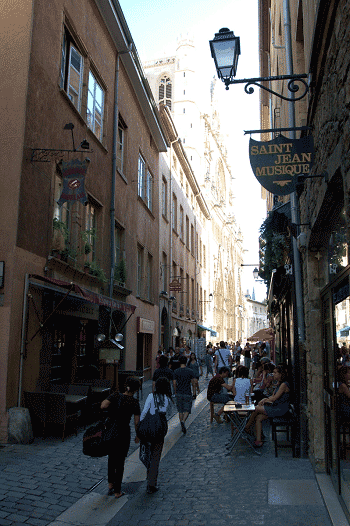
After descending the hill, duck into the picturesque Vieux Lyon quarter. Here the narrow streets invite wandering and discovering the small shops. Explore the district’s quirky traboules, passageways connecting parallel streets. Running through buildings and courtyards, these unique corridors allow visitors to peek behind the city’s curtains. The beauty of them is that you never know whether you will find a gallery or spiral staircase or perhaps glimpse a scene from Lyonnais family life.
Housed in a 16th Century Renaissance building in the middle of Vieux Lyon, the Gadagne Musées recently undertook an extensive renovation. The complex contains both the Puppets of the World Museum, home to over 2,000 puppets, as well as newly created terraced gardens modeled on the original Renaissance gardens in the area. Puppetry is intrinsic to the character of Lyon. The city’s working class spirit is represented by Guignol, a puppet known for his wit, passion and strong sense of justice. His origins lie with Laurent Mourguet, an unemployed silk worker who turned to puppetry to attract customers to his dentistry practice (which, at the time, consisted mostly of tooth pulling). With the success of his characters, most notably Guignol, Mourguet dropped dentistry to become a full-time puppeteer. Since then, the city has adopted Guignol, depicted often holding an assortment of working class jobs, as its symbol. Today various performances with Mourguet’s characters take place around town and you’ll tend to see Guignol all over Vieux Lyon, with the original safely ensconced in the Puppet Museum.
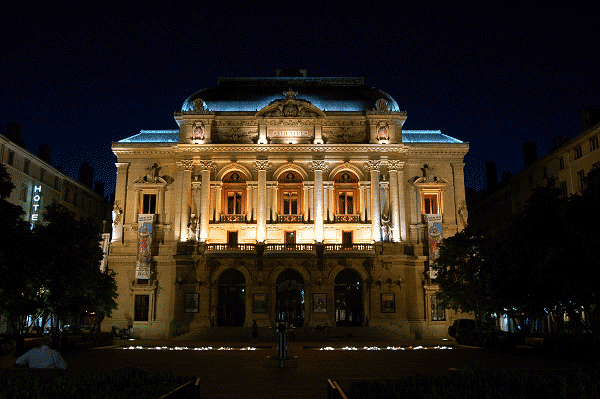
Across the Saône on the Presqu’île, the modern district unfolds around the expansive Place Bellecour with numerous boutiques and pedestrian streets teeming with shoppers. Bellecour, the largest pedestrian square in Europe and the city’s center, is Lyon’s gathering place in all seasons. Its leafy edges provide respite from the summer heat and in winter, it hosts both an ice skating rink and a towering Ferris wheel. Nearby, the Musées des Tissus, the Tapestry Museum, traces the history of tapestry throughout history including Lyon’s role as the home of France’s silk industry. Before hitting the area’s shops, take a break in a café outside the Theatre des Célestins, built in the 18th Century. Afterward, don’t miss one of my favorite culinary spots, Malleval (11 Rue Emile Zola), a combination wine merchant and delicatessen. Founded in 1869, Malleval balances a terrific collection of French wines and vintage Armagnacs with everything from condiments and spices to caviar and foie gras to teas and sweets.
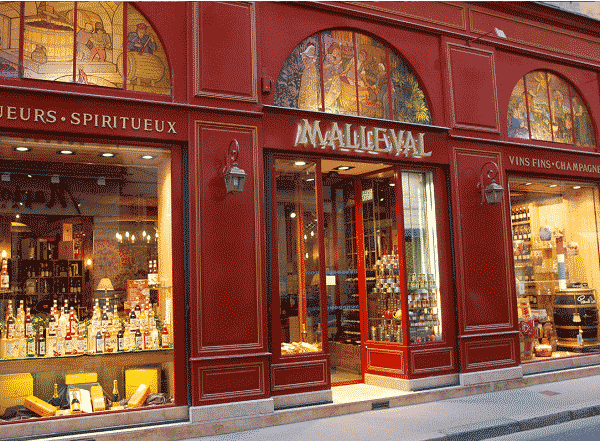
Heading north, stop to admire the façade of the Gothic church of Saint Nizier before continuing to Place des Terreaux, Lyon’s administrative and artistic hub. Grab a seat at one of the many outdoor cafes here and take in the two-story Fontaine Bartholdi by Frédéric-Auguste Bartholdi, made famous for his design of the Statue of Liberty. This fountain, depicting France and its four major rivers, was commissioned by the mayor of Bordeaux then subsequently abandoned, only to be built and installed in Lyon in 1889. Opposite stands the sprawling Beaux Arts Museum, featuring works of art from ancient times to today. Reubens, Monet, Gauguin, Degas and Picasso are just a few of the artists represented in the collection occupying a former abbey with a lovely interior sculpture garden. Lyon’s imposing Hotel de Ville, the city hall, stands at the eastern end of the plaza with the Opera and its famous eight muses beyond.
Emerging south from the Perrache train station is a new district named for the end of the peninsula where the Saône and Rhône meet, La Confluence. Here you can wander the banks of the Saône while observing the birth of an entirely new neighborhood from the former industrial wasteland. The river banks have been reclaimed and transformed into pathways and parks, while a new marina fronted by apartment buildings and shops brings the river into the midst of the city. Drop into sprawling restaurants like Rue Le Bec, Docks and DoMo or enjoy an art show at one of the nearby galleries. Large scale exhibitions including the Lyon Biennial take place at La Sucriere, a former sugar plant, at the southern end of the district.
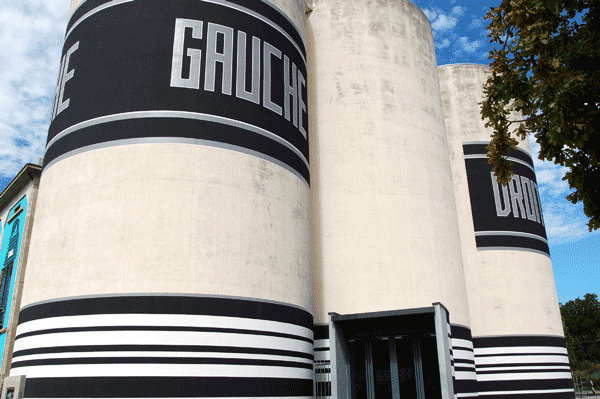
Fortunately, the slower pace of life here means more time to enjoy the cuisine. Lyonnaise cooking is considered the best in France, though it can be rich. Expect to find quenelles, tripe, numerous sausages including the popular Andouille and blood sausage and of course, Pommes Lyonnaise, a classic French dish of sliced pan fried potatoes and thinly sliced onions sautéed with butter and parsley . House wines tend to be of good quality and from the surrounding regions of Beaujolais and Côtes du Rhône.
The city is also famous for its bouchons, rustic family run taverns where diners often sit communal style. Bouchons have a long history, having provided sustenance for the city’s silk workers. Not all bouchons are authentic, look for the sign stating “Authentique Bouchon Lyonnais” displayed in the windows of establishments such as Chez Paul.
Across the Rhône in the area known as Part-Dieu stands the city’s central market, Les Halles de Lyon Paul Bocuse, bearing the name of the culinary giant who put nouvelle cuisine on the map in the 1970s. Renovated in 2006, the market has more than fifty vendors, selling everything from oysters to macaroons. One of the most famous vendors, Renee Richard, sells cheese to all the city’s top restaurants. Les Halles’ restaurants such as Chez Les Gones offer good value and showcase the market’s products.
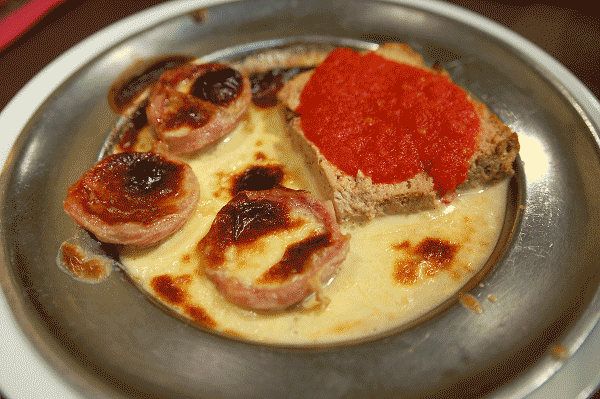
Though Lyon somehow manages to remain off the tourist track, the city’s fascinating history and excellent cuisine make it a great destination for a weekend of exploring. Arrive hungry with your best walking shoes.
The area code for Lyon, France is 33-04
Where to Sleep:
Hotel des Célestins – Centrally located in a busy shopping area near Vieux Lyon, this affordable hotel shares its name with the nearby theater. 4 rue des Archers, 33/04-7256-0898
Phénix Hotel – Situated on the banks of the Saône in a Vieux Lyon Renaissance building, this 36-room hotel features river views and access to a vaporetto connecting with La Confluence.
7 Quai Bondy, 33/04-7828-2424
Cour des Loges – This beautiful hotel occupies four separate buildings joined by a courtyard in the heart of Vieux Lyon. Though rooted in history, the hotel has all the modern conveniences, from a spa to swimming pool to two restaurants, one of which, Les Loges, received a Michelin star in 2012. 2, 4, 6, 8 rue du Boeuf, 33/04-5090-6320
Where to Eat & Drink:
Chez Paul – This cozy spot epitomizes the bouchon experience, with course after course of rustic dishes served at communal tables. Expect hearty food like sausages, beef tongue, pike quenelles and oxtail. The parade of food will leave you fully sated for only €25.
11 Rue Major Martin, 33/04-7828-3583
Les Halles de Lyon Paul Bocuse – (no website) Wander among the enticing stalls then drop in to Cellerier (stand #26) for fresh shellfish and oysters from the Atlantic. For a full meal, cozy and affordable Bouchon Chez Les Gones, serves hearty regional dishes such as breaded tripe and andouillette sausage (2-course menu €18, 3 courses €22 or €26 with wine). Afterwards, pick up macaroons at Maison Victoire and Seve Maitre Chocolatier. Note that most vendors close between 12 pm and 3 pm for lunch and the market is closed on Mondays. 102 Cours Lafayette Part-Dieu.
Rue le Bec – Michelin-starred chef Nicholas Le Bec lent his talents to this massive restaurant and retail complex anchoring the new district known as La Confluence. Dine in the main restaurant, La Grande Rue, or enjoy the river views from the terrace. For a more intimate experience, repair to Chai 8, a wine bar where you can enjoy a glass amidst seventy barrels filled with wine. 43 quai Rambaud, 33/04-7892-8787
Georges Five – With wine regions surrounding Lyon, there is no shortage of great wine to drink in the city. This off-shoot of the highly regarded Antic Wine Shop, features over 1,800 selections by the bottle, more than three dozen by the glass and an eclectic menu of small plates featuring naturally made sausages, foie gras, French cheeses and more. 32 rue du Boeuf, 33/04-7240-2330
Soda Soul n’ Spirits – (no website)
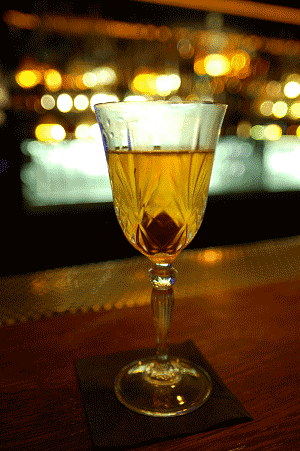
This tiny cocktail bar brings a French flavor to the classics. Drop in for the delicious C.B.S. made with two spirits from Normandy, Calvados and Benedictine, or a properly made Vieux Carre. Don’t be surprised if you are surrounded by Zombies, the liquid kind, as the French patrons are quite fond of this rum-based favorite, especially when they are set alight. 7 Rue de la Matinière
What to See and Do:
Musée des Beaux Arts de Lyon – The museum’s collection spans everything from ancient times through the Old Masters and Impressionism to 20th Century Art. 20 Place des Terreaux, 33/04-7210-1740,
Basilica of Notre Dame de Fourvière – The city’s iconic cathedral sits atop Fourvière Hill. Visit the Museum of Sacred Art to see the treasury and view works of religious art. 8 Place du Fourviere, 33/04-7825-8619
Musées Gallo-Romains – A collection of artifacts from the time the Romans ruled the river valley, with Lyon as the capital of Gaul. 17 rue Cléberg, 33/04-7238-4930
Gadagne Musées – This complex includes the Lyon History Museum and the Puppet Museum in newly renovated Renaissance-era buildings. 1 place du petit Collège, 33/ 04-7842-0361
Musées des Tissus (Textile Museum) – Lyon’s history is closely tied to silk production, from its bouchons feeding silk workers to the working-class puppet Guignol created by an unemployed silk worker. Silk is just one of the focuses of the Textile Museum, which features tapestries, clothing and more from twenty-five centuries of human history. Over 2 million different pieces are preserved in the collection. 34 rue de la Charité, 33/04-7838-4200

